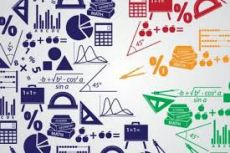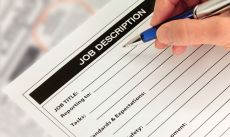Read the following passage and mark the letter A, B, C or D on your answer sheet to indicate the correct answer to each of the following questions
SCIENCE FLYING IN THE FACE OF GRAVITY
It looked just like another aircraft from the outside. The pilot told his young passengers that it was built in 1964, a Boeing KC-135 refueling tanker, based on the 707. But appearances were deceptive, and the 13 students from Europe and the USA who boarded the aircraft were in for the flight of their lives.
Inside, the area that normally had seats had become a long white tunnel. Heavily padded from floor to ceiling; it looked a bit like a lunatic asylum. There were almost no windows, but lights along the padded walls eerily illuminated it. Most of the seats had been taken out apart from a few at the back, where the young scientists quickly took their places with a look of apprehension.
From 12 months, science students from across the continents had competed to win a place on the flight at the invitation of the European Space Agency. The challenge had been to suggest imaginative experiments to be conducted in weightless conditions. For the next two hours the Boeing's flight resembled that of an enormous bird which had lost its reason, shooting upwards towards the heavens before hurting towards Earth. The intention was to achieve weightlessness for a few seconds.
The aircraft took off smoothly enough, but any feelings that I and the young scientists had that we were on anything like a scheduled passenger service were quickly dismissed when the pilot put the plane into a 45-degree climb which lasted around 20 seconds. Then the engine cut out and we became weightless. Everything became confused, and left or right, up or down no longer had any meaning. After 10 seconds of free-fall descent, the pilot pulled the aircraft out of its nosedive. The return of gravity was less immediate than its loss, but was still sudden enough to ensure that some students came down with a bump. After two hours of going up and down in the plane doing experiments, the predominant feeling was one of exhilaration rather than nausea. Most of the students thought it was an unforgettable experience and one they would be keen to repeat.
Câu 31 : What does the writer say about the plane?
Hãy suy nghĩ và trả lời câu hỏi trước khi xem đáp án
Lời giải:
Báo saiKiến thức: Đọc hiểu
Giải thích: Người viết nói gì về chiếc máy bay?
A. Nó không có chỗ ngồi.
B. Nó không có cửa sổ.
C. Bên trong được sơn màu trắng.
D. Bên ngoài đã gây hiểu lầm.
Thông tin: But appearances were deceptive, and the 13 students from Europe and the USA who boarded the aircraft were in for the flight of their lives.
Tạm dịch: Nhưng đó chỉ là vẻ bề ngoài, và 13 sinh viên từ Châu Âu và Hoa Kỳ lên máy bay đã tham gia chuyến bay của riêng họ.
Câu 32 : What does the word eerily in paragraph 2 mean?
Hãy suy nghĩ và trả lời câu hỏi trước khi xem đáp án
Lời giải:
Báo saiKiến thức: Đọc hiểu
Giải thích: Từ eerily trong đoạn 2 có nghĩa là gì?
A. badly (adv): xấu, tồi
B. brightly (adv): tươi sáng, rực rỡ
C. clearly (adv): rõ ràng, sáng sủa
D. strangely (adv): kỳ lạ, lạ thường
=> eerily (adv): in a strange, mysterious and frightening way = strangely
Thông tin: There were almost no windows, but lights along the padded walls eerily illuminated it.
Tạm dịch: Hầu như không có cửa sổ, nhưng ánh sáng dọc theo các bức tường độn bằng bông chiếu sáng nó một cách kỳ lạ.
Câu 33 : What did the pilot do with the plane?
Hãy suy nghĩ và trả lời câu hỏi trước khi xem đáp án
Lời giải:
Báo saiKiến thức: Đọc hiểu
Giải thích: Phi công đã làm gì với chiếc máy bay?
A. Anh ta leo lên và làm cho máy bay bị lật.
B. Anh ta lên cao và làm máy bay rơi từ từ.
C. Anh ta nhanh chóng leo lên và dừng động cơ.
D. Anh ta cất cánh bình thường và sau đó cắt động cơ trong 20 giây.
Thông tin: The aircraft took off smoothly enough, but any feelings that I and the young scientists had that we were on anything like a scheduled passenger service were quickly dismissed when the pilot put the plane into a 45-degree climb which lasted around 20 seconds. Then the engine cut out and we became weightless. After 10 seconds of free-fall descent, the pilot pulled the aircraft out of its nosedive.
Câu 34 : What does the word it in the last paragraph refer to?
Hãy suy nghĩ và trả lời câu hỏi trước khi xem đáp án
Lời giải:
Báo saiKiến thức: Đọc hiểu
Giải thích: Từ it trong đoạn cuối đề cập đến điều gì?
A. niềm vui B. cơ hội
C. máy bay D. chuyến đi
Thông tin: After two hours of going up and down in the plane doing experiments, the predominant feeling was one of exhilaration rather than nausea. Most of the students thought it was an unforgettable experience and one they would be keen to repeat.
Tạm dịch: Sau hai giờ đi lên xuống máy bay làm thí nghiệm, cảm giác chủ yếu là một niềm phấn khởi thay vì sự kinh khủng. Hầu hết các sinh viên nghĩ rằng đó là một trải nghiệm khó quên và họ sẽ muốn lặp lại.
Câu 35 : Why was this passage written?
Hãy suy nghĩ và trả lời câu hỏi trước khi xem đáp án
Lời giải:
Báo saiKiến thức: Đọc hiểu
Giải thích: Tại sao đoạn văn này được viết?
A. Để khuyến khích những người trẻ tuổi tham gia khoa học.
B. Để mô tả kết quả của một cuộc thi khoa học.
C. Để báo cáo về một kỹ thuật khoa học mới.
D. Để cho các nhà khoa học thấy những gì những người trẻ tuổi có thể làm.
Thông tin: After two hours of going up and down in the plane doing experiments, the predominant feeling was one of exhilaration rather than nausea.
Tạm dịch: Sau hai giờ đi lên xuống máy bay làm thí nghiệm, cảm giác chủ yếu là một niềm phấn khởi thay vì sự kinh khủng.
Đề thi giữa HK2 môn Tiếng Anh 12 năm 2021
Trường THPT Đức Thọ











